Plant Watering Smart Buckets
Going away? Need to remotely water your plants?! You need one of these!
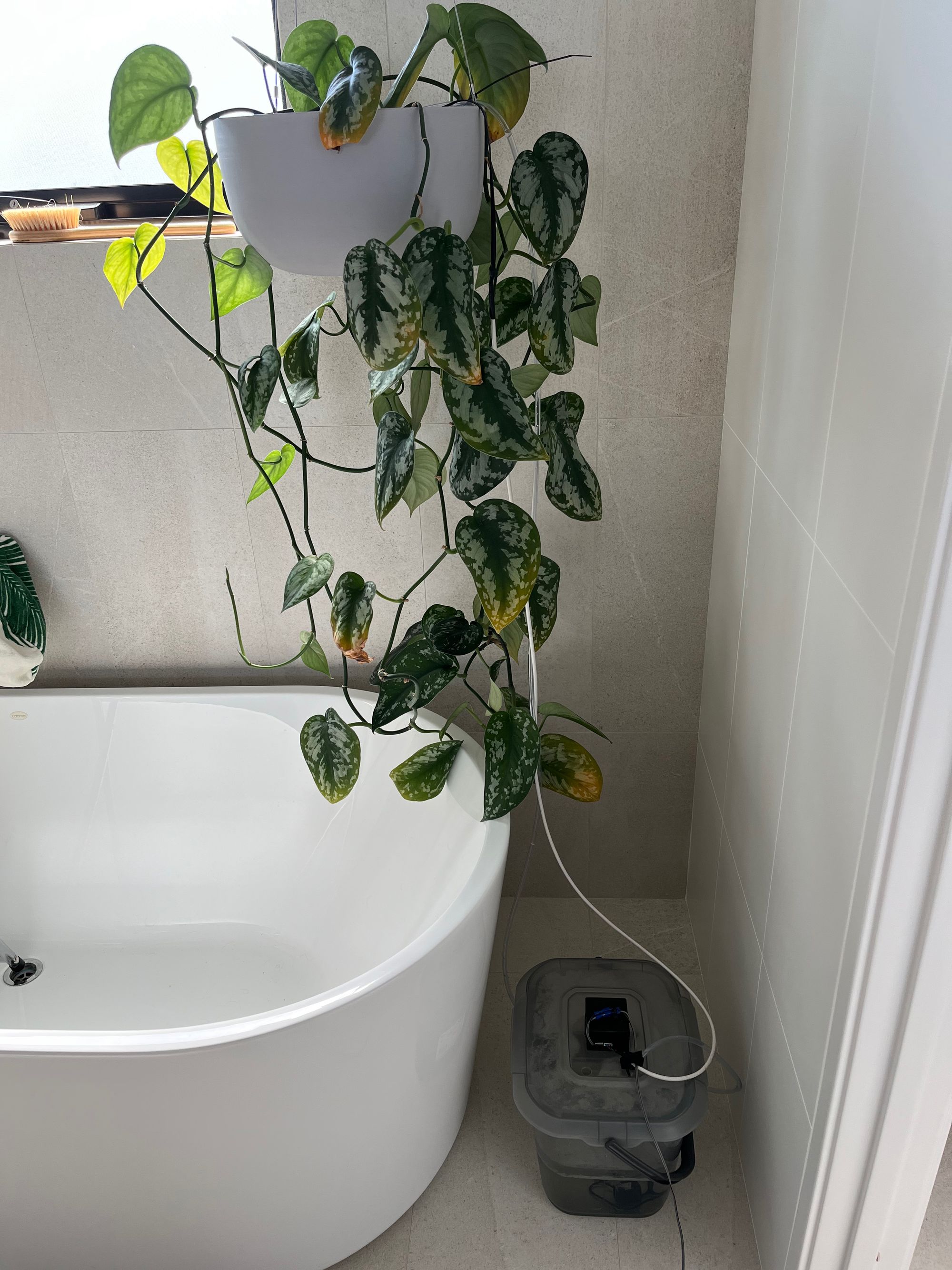
Going away? Need to remotely water your plants?! You need one of these!
| Status | Operational |
| Platform | D1 Mini ESPHome |
| Budget | $50 |
| Date Completed | December 2020 |
Summary of operation
Basically it's a bucket of water with a small submersible water pump that sits in the bottom and waters the plant via clear vinyl hose.
To make it remotely operate, and for some extra features, it also includes a sensor to measure the soil moisture, as well as a level meter in the bucket.
It runs ESPHome software for operation via Home Assistant!
It does need a 12VDC power supply to run the pump - so unfortunately needs to plug in. But hey - maybe a future improvement could be battery power.
Parts used
- ESP8266 D1 Mini (knock off) - search D1 Mini on eBay or Amazon and buy them in lots of 5 or 10!
- 5V 1-channel relay module to control the pump. https://core-electronics.com.au/5v-single-channel-relay-module-10a.html
- Submersible water pump - I used the DFRobot brand https://core-electronics.com.au/immersible-pump-water-tube.html
- Gravity VL53L0X ToF Laser Range Finder. Measures depth of water in the bucket. https://core-electronics.com.au/gravity-vl53l0x-tof-laser-range-finder.html
- Capacitive soil moisture sensor. More reliable than the conductivity type. https://core-electronics.com.au/gravity-analog-waterproof-capacitive-soil-moisture-sensor.html
- Custom PCB I made using the toner-transfer method. Try YouTube for examples like this - https://www.youtube.com/watch?v=cVhSCEPINpM
- 3D printed enclosure based on the "Ultimate Parametric Box". https://www.thingiverse.com/thing:1355018
- Runs ESPHome and is available in Home Assistant.
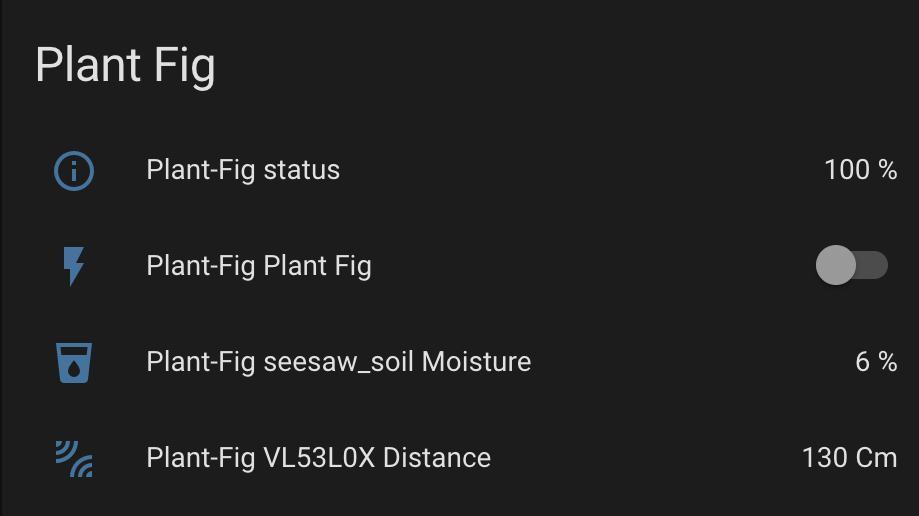
Some engineering detail
The circuit board is really basic. It just connects a GPIO output from the D1 Mini to the relay board. The 2 headers are i2c with power and ground. The soil sensor is i2c and so is the laser range finder for the bucket water depth.
Made it using the cold/acetone toner transfer method and etched in warm ammonium persulfate (first photo). Finished an assembled PCBs shown in the following images.

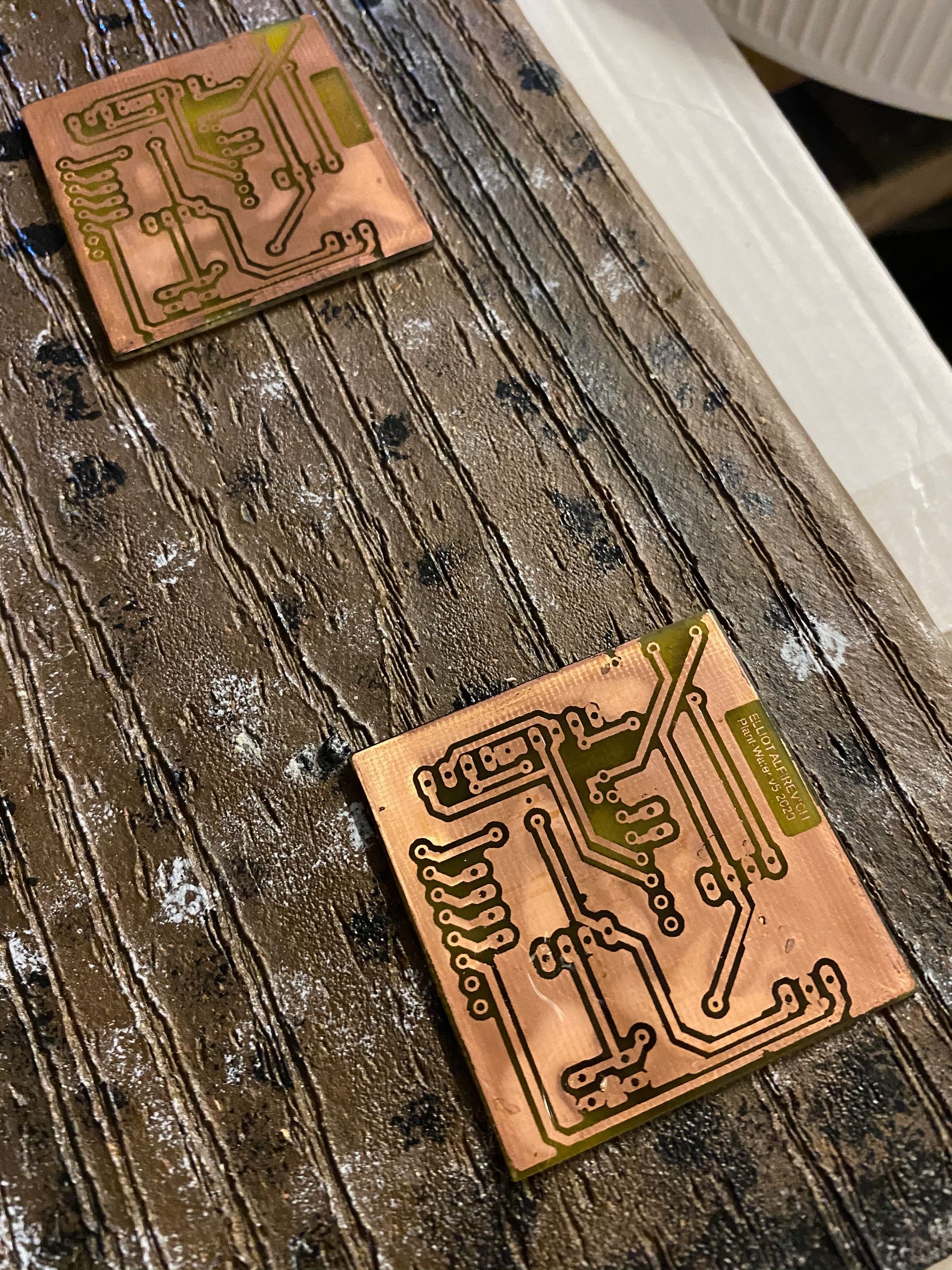
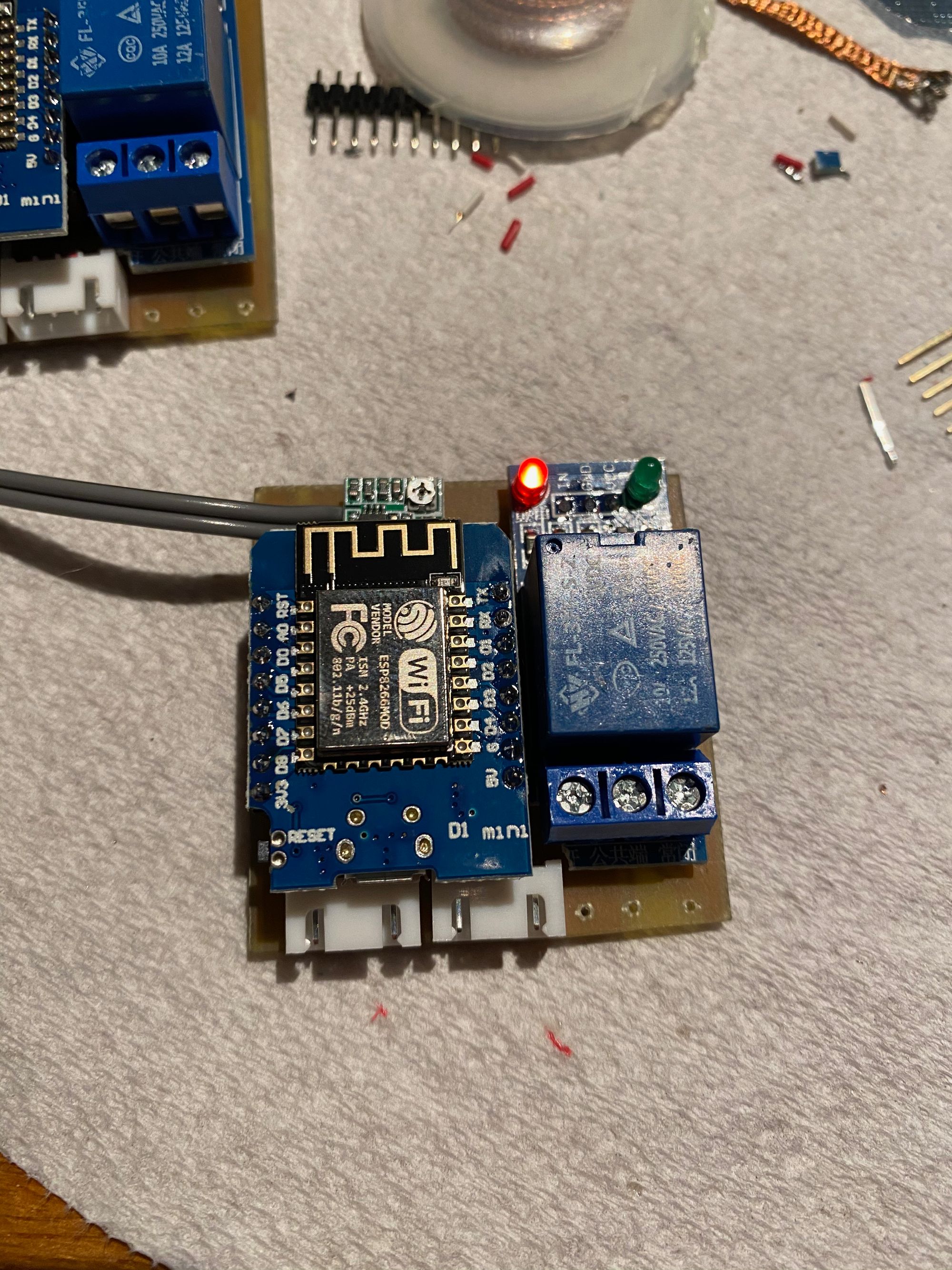
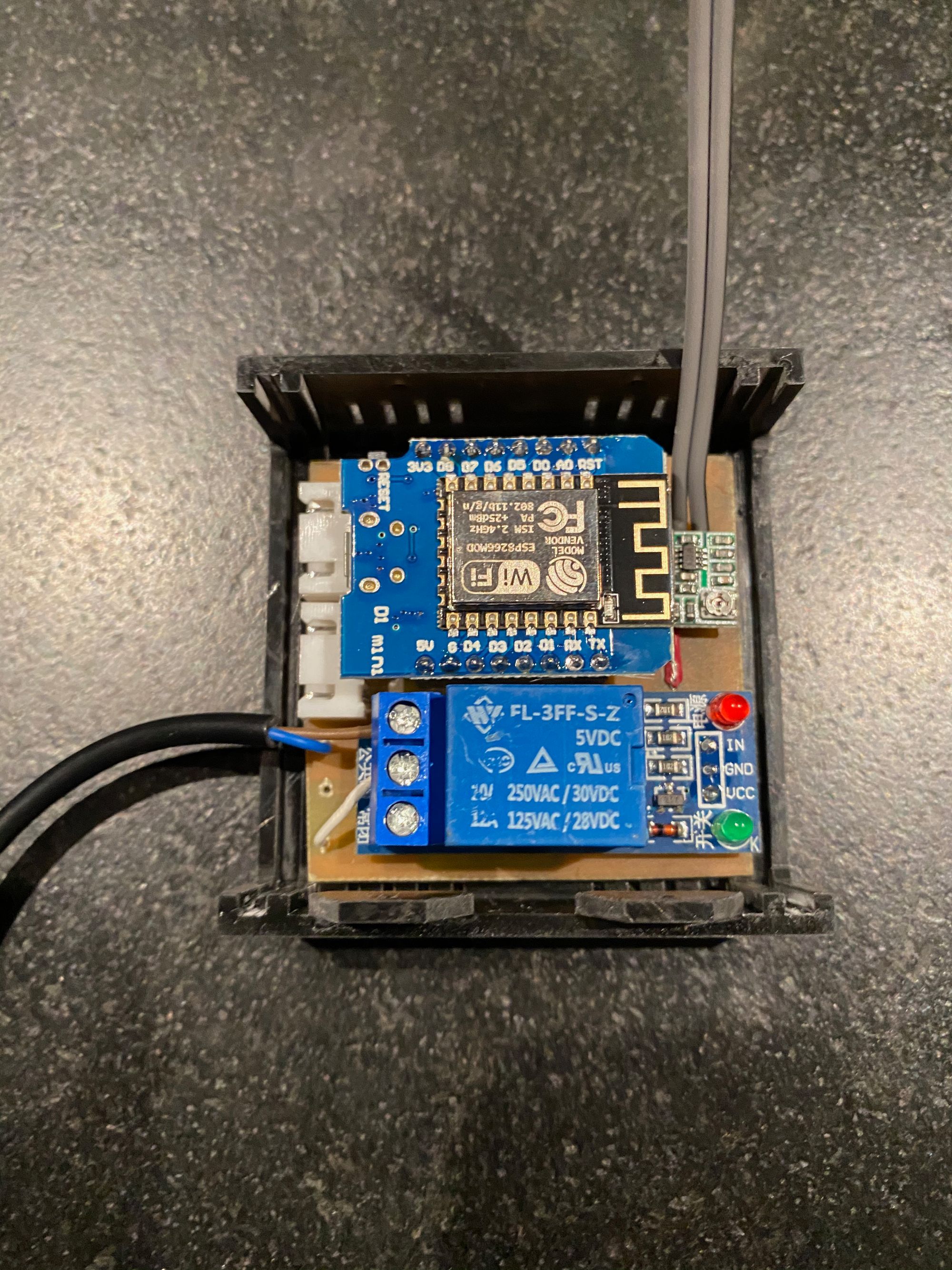
Future improvements
Some ideas for future improvements:
- Battery operation. Would need timer/interrupt method to wake up the device say every couple of hours to see if watering has been cued in the meantime. Otherwise the WiFi will run the battery flat!
- Better soil sensors. I don't know what it is with soil sensors - but they're all pretty average. I think there's better types which go on a leaf to measure light passing through?
- Peristaltic style pump for a measured dose of water. These pumps I used were just cheaper and easier. But not accurate in terms of water they deliver as they're very dependent on the head pressure of the pipework.
- Button to press to water locally from the unit.
